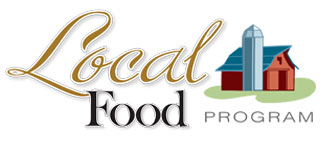


Pie or Sugar: These types are for cooking.
Naked-seeded: These types are gworn for their large, hull-less seeds that are often roasted.
Look for pumpkins that are deep orange and heavy for their size. Avoid pumpkins that are soft, cut, or bruised.
Pumpkins are always used cooked and the peel is not eaten. Pumpkin flesh is quite hard and can be tricky to cut safely. One way around this difficulty is to bake the pumpkin whole on a baking sheet until it is soft and easier to cut. To do this, prick holes in the pumpkin first and bake at 350°F for about 1 hour.
Once soft, allow the pumpkin to cool, cut it in half, remove the seeds and stringy pith with a spoon, then scoop the orange or yellow flesh from the skin. This cooked flesh can be used whenever pumpkin puree is called for: pumpkin pie, pumpkin soup, pumpkin bread.
Bake: Cut pumpkin into desired pieces face down in baking dish in preheated 350°F oven for 1 to 2 hours or until tender. Let cool, then scrape out the flesh.
Seeds: Remove seeds from the pumpkin. Clean with water and boil in salt water for about 10 minutes. One quart of water and two tablespoons of salt to every two cups of seeds. Drain the seeds and lightly dry with a paper towel. Heat oven to 325°F. Spread seeds on a baking sheet, drizzle with 1-2 tablespoons of olive oil, and sprinkle with salt to taste. Roast seeds for about 10 minutes.
Pumpkins can be kept at room temperature for a few months. There is no need to refrigerate them, but they will keep longer in a slightly cooler location.
Pumpkin can be canned or frozen.
Halloween pumpkins are edible and the source of canned pumpkin.
|
Serving Size |
1 cup (1' cubes) (116g) |
|
|
|
|
|
|
Nutrients |
Amount |
% Daily Value |
|
Total Calories |
30 |
|
|
Protein |
1g |
|
|
Carbohydrates |
8g |
3 |
|
Dietary Fiber |
1g |
2 |
|
Total Sugars |
3g |
|
|
Total Fat |
0g |
0 |
|
Saturated Fat |
0g |
0 |
|
Cholesterol |
0mg |
|
|
|
|
|
|
Minerals |
|
|
|
Calcium |
24mg |
2 |
|
Sodium |
1mg |
0 |
|
Iron |
1mg |
5 |
|
|
|
|
|
Vitamins |
|
|
|
Vitamin A |
494 ug |
171 |
|
Vitamin C |
10 mg |
17 |
|
|
|
|
|
|
|
|
Always keep fresh produce away from raw meat and raw meat juices to avoid cross-contamination.
Follow the safe food guidelines for all fresh produce.
Pumpkins are well suited for home gardens (if enough space is available).
Plant seeds 1 inch deep. Space bush varieties is 24-48 inches in rows 6 feet apart. Vining pumpkins
require 50-100 sqare feet per hill. For vining varieties, allow 5-6 feet between hills with 2-3 plants and at
least 10 feet between rows. For semi-vining (semi-bush) varieties, thin to 2 plants per hill, 4 feet
between hills, 8 feet between rows. For miniature varieties, plant in rows, 2 feet between plants, a
minimum of 6 feet between rows.
Pumpkins are ready to harvest when they are a deep, solid color. Different varieties may be
orange, tan, white, or striped, so know how your variety should look. The rind should be hard.
You can cover pumpkins to protect them from a light frost, but make sure to harvest before
heavy frosts. Pumpkins harvested after a frost will not keep.
Scan the QR code below to view this page on your mobile device.